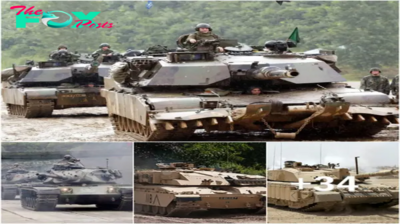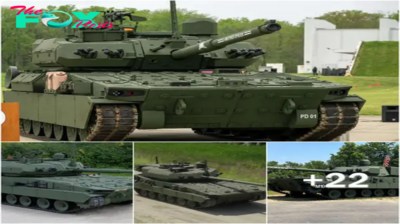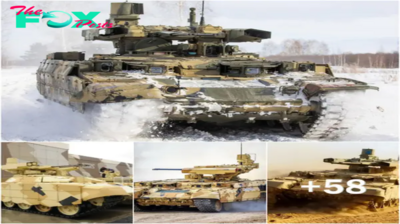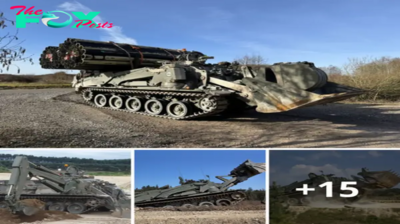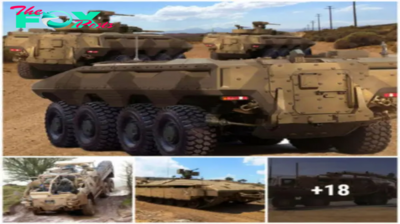Military
The Enchanting Grandeur of the Swedish Fighter Plane Continues to Captivate Global Audiences

For a country with a population of just over 10 million people, it’s impressive that Sweden can maintain one of the best fighter aircraft programs.
An aircraft’s effectiveness is no longer determined mainly by how fast it can fly. Now it’s about how instant AI can interpret information and present the data for pilots to act upon in battle.

Unlike US or Russian fighters, Swedish Gripens can’t carry the most weapons, has no rear stealth. To be clear, it isn’t the longest-range, the fastest, or even the cheapest jet. Nevertheless,
Sweden has chosen another niche to comPete. The country’s focus is to develop a fighter jet with the most advanced electronics to become a nightmare for its closest adversary – Russia.

Why Can’t Sweden Sell Its Fighter Jets?
When it comes to fighting its defense industry, Stockholm is hesitant — and it’s hurting Swedish companies and handing lucrative contracts to comPetitors.

In December, French President EMMAnuel Macron visited the United Arab Emirates. He left with a $19 billion order for French Dassault Rafale fighter aircraft. You wouldn’t see Swedish Prime Minister Magdalena Andersson performing energetic sales pitches for Sweden’s Gripen jets the way Macron does for French Military equipment — or the way most leaders of other countries with defense industries do for their local companies.
Since the end of the Cold War, the Swedish government has mostly been putting defense exports in the hands of the globalized market. But with other countries’ leaders pitching their companies to governments now investing more in defense, it’s a flawed strategy. Oddly, Swedish governments of different stripes have put their faith in an invisible hand that simply does not exist when it comes to defense equipment.

Last September, the United States, the United Kingdom, and Australia unveiled their so-called AUKUS agreement, which will see Australia build nuclear-powered submarines aided by British and American Technology. That, in turn, meant that Australia relinquished an agreement with the French company Naval Group for diesel-powered submarines. Apologetic anger ensued from Paris, with allegations that friends had stabbed France in the back.
A few years earlier, Sweden’s Gripen suffered a similar setback. In 2012, Switzerland was getting ready to buy new fighter jets, and having investigated its options, the government — backed by the armed forces — opted for the Gripen over other top contenders, France’s Dassault Rafale and the Eurofighter Typhoon.
The Gripen offered the best value, Bern concluded. But no sooner had the Swiss government announced its decision than a Mysterious assessment of the Gripen began circulating in the local media. The report, allegedly approved by Swiss Air Force chief Lt. Gen. Markus Gygax — though the report gave him the title “Three-star general M. Gygax” — concluded that the Dassault Rafale would in fact be the best choice for Switzerland. Gygax, though, had supported buying the Gripen. When the report began circulating, Swiss Defense Minister Ueli Maurer remained firm: “What’s good enough for Sweden is good enough for us,” he declared. Indeed, the two countries — and other moderately sized nations — share the need for a versatile fighter that doesn’t break the bank.
-
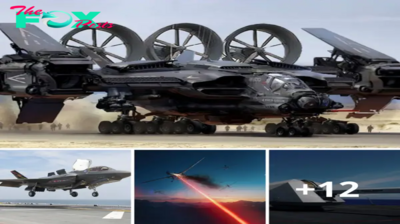
 Military9h ago
Military9h agoLamz.Unveiling the Future of Warfare: 20 Groundbreaking Military Technologies
-

 Military16h ago
Military16h agoLamz.Enhancing Naval Aviation: New Replacement for the Aging C-2 Greyhound Promises Improved Transport
-
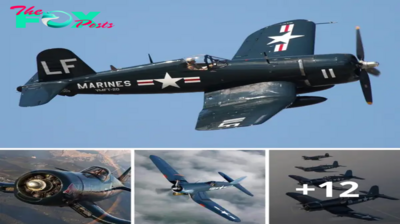
 Military23h ago
Military23h agoLamz.The F4U Corsair: World War II’s Legendary “Whistling Death
-

 Military1d ago
Military1d agoLamz.Venom Unleashed: Exploring the Legendary Legacy of the Bell AH-1Z Viper in Modern Warfare
-

 Military1d ago
Military1d agoLamz.Chasing History: The Quest to Uncover Bismarck’s Wreckage
-

 Military1d ago
Military1d agoGeneral Dynamics Land Systems Unveils the Stryker QB at AUSA 2023 -zedd
-

 Military2d ago
Military2d agoLamz.Russian Military Marvels: Behold the 20 Most Incredible Vehicles and Technologies
-

 Military2d ago
Military2d agoB83. America’s most expensive home, a 60,000 square foot home in Hillsboro Beach, Florida, is for sale for $139 million.


